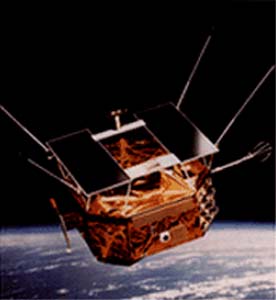
Source: NASA
CRRES (Combined Release and Radiation Effects Satellite) was launched July 21, 1990 into a geosynchronous transfer orbit, with apogee at geosynchronous orbit (6.6 RE), perigee at 300 km, and an inclination of 18 degrees relative to the equatorial plane. CRRES carried a wide range of particle detectors as well as a very accurate and highly developed electric field instrument.
CRRES was active for 16 months and the observations it made revolutionized the study of the earth’s radiation belts and our understanding of the magnetosphere’s response to geomagnetic storms.
University of Minnesota CRRES Publications
- J.R. Wygant et. al., “The CRRES Electric Field/Langmuir Probe Instrument”, J. Spacecraft and Rockets, 29, 601 (1992).
- Rowland, D. E. and J. R. Wygant, “Dependence of the large-scale, inner magnetospheric electric field on geomagnetic activity”, Journal of Geophysical Research, 103, 14959, 1998.
- “Observations of CRRES electric and magnetic field measurements during the Alfven wave braking of a barium release in the ionosphere”, Geophys. Res. Lett., (1994).
- J.R. Wygant et. al., “Large amplitude electric and magnetic field signatures in the inner magnetosphere during an SSC induced injection of 15 MeV electron drift echoes”,Geophys. Res. Lett., 21, , 16, 1739 (1994).
Data
CRRES data on University of Minnesota
Links
